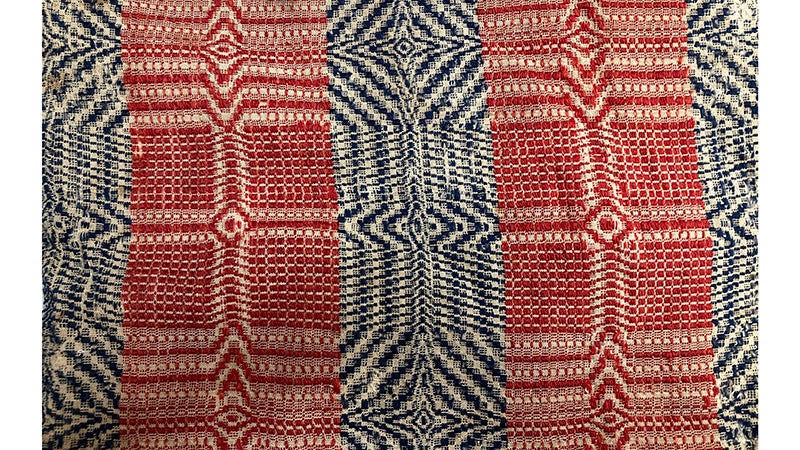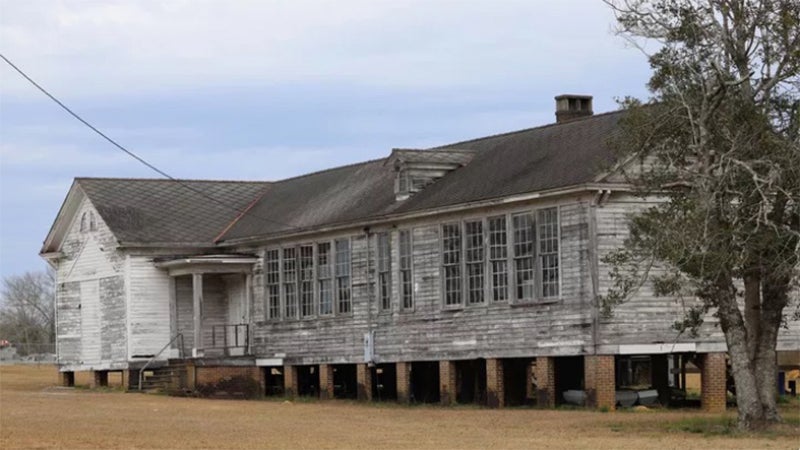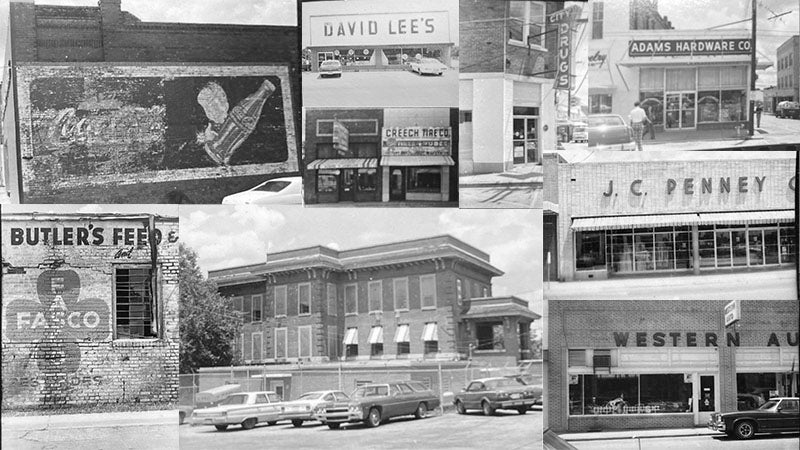Remember when: Foshee became a WWII hero
Published 12:43 am Saturday, March 25, 2017
With this week’s passing of South Alabama’s own Crum Foshee, my thoughts drift back to 2010, the year designated by Gov. Bob Riley as “The Year of the Small Towns.” The late uncle of Crum and Wheeler Foshee, Ben Crum Foshee, was honored with the dedication of the firehouse at the South Alabama Regional Airport. Many military enthusiasts are familiar with this story, but many of you readers may not have ever heard it before. Even some have misunderstood the significance of one of the world’s most illustrious squadrons, “The Flying Tigers,” whose success went unrecognized for many years. Here is Ben’s story as told by his nephews, Wheeler and Crum Foshee.
Ben Crum Foshee was the sixth and youngest child of George Washington and Ella Lavonia Foshee. Born Dec. 21, 1915, Ben was graduated from Red Level High School in 1934 (The school records burned in a fire.) and from Auburn University in 1938. Achieving the distinction of being No. 1 in his class, he received a degree in aeronautical engineering.
Experienced in college with the Naval ROTC, Ben became a naval aviator training at the U. S. Naval Air Station in Pensacola receiving his wings in June 1940. During the time that he flew off the carrier, the Lexington, which was docked at the time in Miami, he had the opportunity to meet Gen. Claire Chennault one evening at the officers’ club. The general was recruiting pilots to go to China with the American Volunteer Group (AVG) later to become known by their nickname as “The Flying Tigers.”
On April 15, 1941, President Franklin Roosevelt signed a secret order to form the AVG to help China defend their country from Japanese invasion. By the fall of 1941, the Chinese were nearly defeated. General Chennault, a retired U. S. Army Corps officer, became a military aviation advisor to Chinese Generalissimo Chiang Kai-shek. Chennault had been observing Japanese tactics since 1937. The AVG received government funding and approval to recruit military pilots in the United States. After all, these American pilots had been trained in the late 1930s and early 1940s for war, but the Pearl Harbor attack had not yet occurred. These young pilots were revved up and ready for war!
The pilots who volunteered were discharged temporarily from the United States armed services to fly and fight for the Republic of China Air Force. Of the 100 pilots recruited, 40 came from the Army Air Corps, and 60 came from the Navy and Marine Corps. Volunteers could sign a contract without rank, with good pay, fabulous salaries nearly triple plus a $500. bonus for each Japanese aircraft shot down, a promise confirmed by Madame Chiang Kai-shek, who extended the offer to aircraft destroyed on the ground.
During the summer and fall of 1941 before the United States’ entry into World War II, 300 men carrying passports that identified them as civilians boarded ships from Honolulu at Pearl Harbor bound for the far east. The ships had loaded in San Francisco where the Curtis P-40’s had been strapped down. They sailed around the tip of Japan to the seaport Chaing Hai. When the AVG arrived, they began training in the hot, humid environment with insects and rodents all around. Many soon resigned and returned to the states. 99 P-40’s arrived and were outfitted with guns. One plane fell off the boat in route.
Most pilots had never flown P-40’s before. There were a lot of accidents, but confidence grew. Group morale was understood by the general, and he allowed the shark’s teeth emblem to be painted on the nose of the airplanes along with the Walt Disney designed logo which was painted on the fuselage.
The Flying Tigers’ initial goal was to protect the Burma Road where the Japanese would enter China bringing supplies and troops into the country. The three pursuit squadrons formed were the 1 – Adam and Eves, 2 – Panda Bears, and 3 – Hell’s Angels.
The AVG had its first combat on December 20, 1941 when Japanese bombers raided Kunming. Very credible performances of the AVG and the RAF (also recruited by Chennault) brought world-wide attention to “The Flying Tigers” especially when considering that the AVG was out-numbered and faced experienced and trained Japanese pilots.
As families back home in America gathered around the radio each evening to listen to the news, it was reported, “The last things some of the Japs saw were the shark’s mouths!”
The Foshee brothers back home were hearing such news headlines as “American airmen – five times better in combat than the Japanese.” San Francisco radio devoted a good ten minutes to telling the world what the AVG was doing for the American cause.
Into early 1942, the pilots continued to score against their tormentors, destroying enemy aircraft in the air and on the ground. Tiger ground crews invented the term “recycling,” because parts were salvaged from crashed airplanes to keep the P-40’s flying. There were about 200 ground crewmen who served. The pilots trained, took off, and landed on dirt runways.
Wheeler Foshee remembers “Ben was General Chennault’s personal pilot. He flew him all around in a C-47. He took a movie camera with him, and the family has some reels of film that he took over there. They stayed for years in a shoebox.”
On May 4, 1942, the Japanese bombed Paoshaun, China. Ben Foshee, running to his aircraft, was wounded in the legs and bled to death before the staff doctor, “Doc Richards,” could get to him. He was buried in the Chinese airmen’s cemetery near Wujiaba.
Wheeler Foshee recalls the early summer of 1942 when he was spending the night with his grandmother and Aunt Mary Ella in the family home at Cohassett.
“Early that morning, my grandmother looked out her front bedroom window and saw Terry Thames, a cotton broker friend of ours who bought cotton from my daddy, who had driven up. My grandmother screamed out, “It’s Ben!”
“Mr. Thames had seen the account of Ben’s death on the front page of The Montgomery Advertiser that morning. Ben had been killed six weeks prior to that although the family had not been notified since communication was such that it was then. A funeral service was held at the Long Branch Baptist Church at Cohassett in the little community where all of the Foshee children had gone to the one-room schoolhouse from grades 1-6.”
The Foshee brothers remember well when Ben Crum resigned his commission (temporarily) and left home a month before he was to sail from San Francisco. On the way, he toured the Western states. Upon arriving, he shipped his green Pontiac back home by rail. The family unloaded it at Evergreen and drove it back to Cohassett.
On May 5, 1942, the day after Ben was killed on May 4 as the Red Dragon army stormed into China by the Burma Road, remnants of the retreating Chinese army blew up a bridge over the Salween River, halting the Japanese entrance into China. “The Flying Tigers” bombed the roadway behind them, thereby blocking the retreat of the Japanese invaders. The carnage inflicted by the “Tigers” over the next three-day period would be comparable to the “Highway of Death” in Iraq. Virtually every aircraft that could fly was brought into the fight to inflict damage on the trapped column. This action saved China from the pending surrender.
With the Burma campaign over, Chennault redeployed his squadrons to provide air protection for China. The AVG’s last combat mission was on July 4, 1942. Overall 14 pilots were killed in action, captured, or disappeared in combat. Two died of wounds sustained in bombing raids, and six were killed in accidents during the FT existence as a combat force. The AVG was officially credited with 297 enemy aircraft destroyed including 229 in the air. The AVG’s success is all the more remarkable since they were outnumbered by Japanese fighters in almost all of their engagements.
“Ben was my favorite uncle,” stated Wheeler Foshee. “I often went to the movies in Andalusia with him and his girlfriend, a Campbell girl from River Falls. I was about 10 or 11 then.”
Ben Crum Foshee’s father contacted Congressman George Grant to bring his body back home, but it was not until 1946 that Mr. Foshee paid a retired Navy commander to go to China to find the cemetery and the body. It was sent back to Los Angeles to Houston to New Orleans and then to Evergreen.
The Foshee brothers stated, “Some time after Ben’s death, our grandmother got personal letters of sympathy from Madam Chiang and Generalissimo Chiang Kai-shek. They had known Ben personally since he flew General Chennault around all over the South Pacific even to Australia to get parts. Our grandmother completely lost her mind after Ben’s death. She eventually buried Ben in the Fairmount Church Cemetery facing the wrong direction so that she could drive down the lane in the cemetery and read the headstone without getting out of the car. Sadly, she was institutionalized in a mental hospital where she passed away.”
For over 50 years, the U. S. swept the success of “The Flying Tigers” under the carpet. Just before their 50th reunion in 1992, the AVG veterans were recognized as members of the U. S. military services for their stunning war record during the seven months the group was in combat against the Japanese. In 1996 the remaining pilots were awarded the Distinguished Flying Cross and the ground crew were all awarded the Bronze Star for professionalism, dedication to duty, and extraordinary heroism. Because they were willing to fly and die for China, the AVG pilots and ground crew were awarded the Nationalist Chinese Order of the Cloud while many received the Nationalist Chinese Air Force Medal. It is said that many in China have not forgotten “The Flying Tigers.” Grandfathers still tell their grandchildren of the heroism of the Americans who saved their country from Japanese aggression.
The Flying Tigers Memorial in Hunan Province, China opened in 2003 is the only museum in the world dedicated exclusively to the FT with displays incorporating artifacts obtained from the AVG veterans. Dedication ceremonies were held in 2005 with several AVG pilots and their families present.
A postage stamp honoring “The Flying Tigers” and General Chennault was issued September 6, 1990.
A History Channel documentary has been made about the FT.
“’The Flying Tigers’ were magnificent, spectacular, truly American heroes,” a chief of staff said in 1992 at a presentation ceremony.
The National Museum of Naval Aviation in Pensacola, Florida features a FT display reflecting the fact that so many Navy and Marine Corps aviators were part of the AVG. Several years ago when this writer toured the National Naval Aviation Museum in Pensacola, I spotted in a display case a letter that Ben Crum Foshee had written home to his mother.
There are other museums with memorials dedicated to the AVG – the National Museum of the U. S. Air Force in Dayton, Ohio; Vandenberg Air Force Base in California; at Hualian AFB in Taiwan; and in Chiang Mai, Thailand.
The Foshee family, the Covington Historical Society, and the many military enthusiasts around the world who follow the blogs on the FT’s is so proud that the late Ben Crum Foshee was memorialized in 2010 at the local airport firehouse after history has smiled on the service of this hometown aviator. Perhaps one day, a plaque can be installed. After all, these are the skies he trained and flew in. It was a pleasure to be able to interview the Foshee brothers about their uncle, to Remember When, to preserve a part of our local history, to participate in a tribute to honor this hero, and to recall part of the adventure he chose to be a part of.
There is more Red Level history to be found at the Three Notch Museum on Historic Central Street. The museum will be open this coming week during spring break. Call ahead at 222-0674 and do visit.





